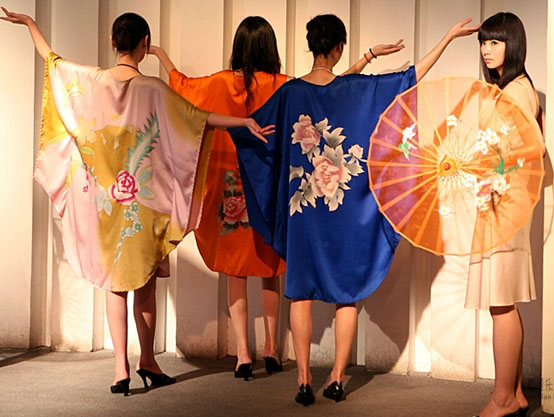Mulberry silk is the highest quality silk you can purchase. It is made from silkworms that are raised in captivity under exacting conditions. It is also the most expensive type of silk. What makes it so expensive and why is it superior to other types of silk? Let me start by telling how mulberry silk is made, a process the Chinese developed thousands of years ago and have perfected, making them the world’s experts in producing the finest silk. Mulberry silk is made from the silkworms of the Bombyx mori moth. The moth has one job to do and that is to lay eggs. After it lays about 500 eggs, its job is finished and it dies. The tiny pinpoint size eggs are kept at 65 degrees Fahrenheit with the temperature slowly and carefully raised to 75 degrees Fahrenheit to hatch the eggs. The tiny silkworms that are born are then fed an exclusive diet of mulberry leaves 24 hours a day, 7 days a week (mulberry leaves are the only food the Bombyx mori moth will eat). After about a month of the constant gorging on the mulberry leaves, the silkworms will have increased their weight about 10,000 times and will have built up enough energy to start spinning their cocoon. It takes anywhere from three to as long as eight days for the silkworm to weave the cocoon.
The cocoons are then kept in a warm place for several days. Great care is taken to ensure the silkworms do not hatch into moths because that would damage the cocoon and break the silk filament it has woven. To harvest the silk from the cocoons, they are place in water to soften the filament. The softened filament is then unwound from the cocoon. One filament can be up to 1,600 yards long. It takes 4-8 of the silk filaments woven together to create one mulberry silk thread. The silkworms may have a short life with their only purpose to be providing silk, but those short lives are pampered ones. In addition to the constant fresh supply of mulberry leaves available to them, their environment is strictly controlled to prevent them from being subjected to loud noises and strong odors such as those from fish and the human odor of sweat.
The resulting mulberry silk thread is the strongest natural fiber in the world, making it incredibly durable. A silk fiber the same diameter as a fiber of steel is stronger than the steel. The mulberry silk thread is also rounder, finer, smoother, and a lighter more uniform color than silk harvested from the wild where those silkworms have to eat whatever leaves and plants that are available to them. Mulberry silk is also known as cultivated silk and bombyx silk but mulberry silk is the most commonly used term. It is also sometimes referred to it by its type which is thrown or reeled silk. If you want the most luxurious, most durable, and finest silk bedding, look for silk sheets made with 100 percent mulberry silk and for silk comforters made with 100 percent mulberry silk floss.
A few other features of mulberry silk include it being 100 percent hypoallergenic and also being odorless and not needing any “airing out” before use like some of the lower quality wild silks. And although the type and quality of the silk is a major consideration, do not overlook the weight of it. High quality silk bedding, should have a “momme” weight (pronounced “mummy”) of at least 12, but more normally between 16-19, and in the case of duvet covers as high as in the low 20’s. The momme weight is a standard unit of measurement for silk and is indicated by the symbol “mm.” The larger the momme number, the heavier the silk, and the more silk that was used in that fabric’s construction. Any silk with a momme weight lower than 12 isn’t suitable for bedding, although there is a lot of it out there that does have a momme weight under 12. The lighter weight bedding won’t be as durable. Don’t overlook thread count although check the momme weight first. That’s the more important consideration, but do opt for silk bedding with a thread count of 400 or higher to ensure you are getting the finest quality mulberry silk that will last for many years.


